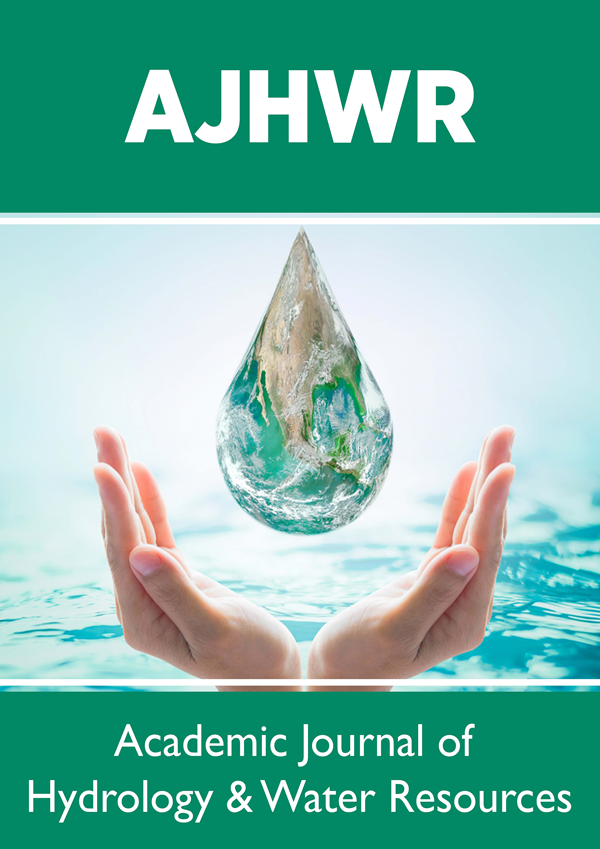Lupine Publishers Group
Lupine Publishers
Menu
Research Article 
Geochemical and Hydro Geothermal Investigation of Thermal Springs of Northern Morocco Volume 1 - Issue 1
Salma Zouiten1, Mliyeh Mohammed Mouad2, Ahmed Zian3 and Lahcen Benaabidate2*
- 1Regional Center for Education and Training Professions Fez-Meknes, Fez, Morocco
- 2Laboratory of Functional Ecology and Environment Engineering, University of Sidi Mohammed Ben Abdellah, Fez, Morocco
- 3National School of Applied Sciences, University of Abdelmalek Essaadi, Al Hoceima, Morocco
Received: July 10, 2023 Published: July 19, 2023
Corresponding author: Lahcen Benaabidate, Laboratory of Functional Ecology and Environment Engineering, University of Sidi Mohammed Ben Abdellah, Fez, Morocco
Abstract
Chemical geothermometers constitute an important indicator for investigation and exploration of geothermal resources. They are used for predicting deep reservoir temperature. These geothermometers have been developed based on the interaction occurring between groundwater and their host rocks. So, they are focused on chemical elements obtained from surface thermal spring waters. The North part of Morocco, according to its geological setting, is an area with different thermal sources. Geochemical investigation revealed that most of those springs are hosted in carbonate and evaporite allochthonous rocks. The application of different models such as [1,2] highlighted that hose springs have undergone a mixing process with shallow water leading to the decrease of their surface temperature and then acquired the shallow water behavior. The deep estimated temperature with the fitting geothermometers (Quatrz, Na-K-Ca-Ma, Giggenbach diagram) remains below 100°C which assumes that in depth water could belong to medium enthalpy.
Keywords: Thermal springs; Geothermometer; Silica; alkaline; Temperature; Northern Morocco
Introduction
Water chemistry is an investigative tool in the exploitation of geothermal resources by determining the temperature of the original reservoirs. In this perspective, geothermometer consists in estimating the temperatures of the last chemical equilibrium before the arrival of surface water. It operates through empirical relations known as “chemical geothermometers”. The majority of these geothermometers were obtained from the comparison of water samples from deep reservoirs with measured temperatures. These relations are therefore based on the chemical equilibrium of certain elements dissolved in water with the reservoir rock.
The validity of these geothermometers, however, is subject to several conditions, the most important of which is the establishment of the equilibrium between the chemical elements present in the solution is the mineral that controls it. In addition, it is as sumed that the studied system is isocheimal between the reservoir and the surface [3]. The validity of this hypothesis has been verified for many geothermal systems [2,4,5]. Nevertheless, uncertainties remain inherent in the application of geothermometer, which are due to errors in the mineral parageneses involved in deep equilibria and/or mixing phenomena of thermal waters with surface waters. All this will have the effect of inducing a deviation from the initial chemical composition of the waters in the reservoir
Materials and Methods
Physical parameters, pH, electrical conductivity, and TDS were measured in the field using a conductivity meter and a pH meter. Major elements and silica have been analyzed in the Laboratory of Geochemistry of the Ministry of Water, Energy and mines in Rabat, Morocco. The analyzes of the dissolved gases in the thermal waters of some warm springs of the North of Morocco were made within the framework of the research project of native sulfur in Morocco launched by the Ministry of Energy and Mines. The campaign of sampling and analysis of these gases interested only a few interesting emergences previously chosen. These analyzes were carried out only on dissolved gases. This study is carried on 42 warm springs located in the North of Morocco (Figure 1).
Result
Geothermometer investigation
Silica geothermometers:
The silica content of the thermal water that emerges on the surface is governed firstly by the water temperature in the reservoir of origin, its composition at depth and especially by the possibility of maintaining its concentration at the point of emergence [6]. This content is conditioned by the weathering of the silicate minerals, which releases cations and silica into the water. The content of this latter is generally fixed, according to the temperature of the area, by one of the allotropic varieties of silica, namely, amorphous silica, cristobalite, chalcedony or quartz. The solubility of these minerals is expressed by the equation:

The species most encountered in geothermal reservoirs are quartz and chalcedony. The presence of amorphous silica at emergence, though rare, is a high enthalpy reservoir index [7]. The solubility of these varieties of silica as a function of pH has been studied by several authors [8, 9] and has been quantified between 25 and 350°C [10]. This phenomenon reaches its maximum around 200°C and becomes less important beyond this temperature.
The silica geothermometer shows the equilibrium of quartz and other mineral phases of silica at high temperatures. It is the best indicator of deep temperature if there is no dilution factor or precipitation after cooling [11]. Before applying silica geothermometer to the thermal springs of the Sebou watershed, it is advisable to determine beforehand the mineral phases of the silica that control the concentration of silica dissolved in these waters. This concentration remains low and ranges from 6.8 mg/1(source of Sarij) to 35 mg/l (source of Kerma). Indeed, the chemical equilibrium simulation program used (WateqF) showed that H4SiO4 is the dominant species in solution with respect to its main ionic form (H3SiO-) (Table 1). Theoretically, only the neutral form of silica (H4SiO4) participates in equilibrium with the mineral species (quartz or chalcedony). The other two forms (H3SiO3 -) and (H2SiO3 2-) therefore remain negligible. The concentrations of the analyzed silica can thus be assimilated to those of H4SiO3, they can be used in the calculations of temperatures by silica geothermometer (Table 2).
Determination of silica saturation index
The calculation of the saturation test of the silica of the studied waters with respect to the allotropic varieties of silica highlights that all waters are saturated with respect to quartz. However, the degree of saturation varies from source to source; the sample of Ain Allah (No. 8) is in perfect equilibrium with quartz, its saturation index (logPAI/K) is close to zero, while the sources of [12,13] have the highest saturation indices. However, these waters can also be considered as being in equilibrium with chalcedony with, in this case too, a very variable saturation index from one water point to another. The equilibrium diagram of the different varieties of silica (Figure 2) highlights that almost all the representative samples of thermal springs are located around the curves of chalcedony and quartz. The dissolved silica cannot therefore come from amorphous silica because all the waters are undersaturated with respect to this mineral. According to [12], waters that are under saturated with amorphous silica at the emergence temperature are of two types. The first type includes waters that have acquired silica by weathering. Silica is therefore the majority species. They are therefore very diluted water containing only a few chlorides. The second type contains concentrated waters, with many chlorides and a low concentration of silica. The waters of our study area rank among the waters of the second type according to their low silica concentrations compared to other dissolved species.
Choice of silica geothermometer
The studied springs have a balance with both quartz and chalcedony. The choice of the geothermometer to use (quartz or chalcedony) is therefore difficult. In all cases, given the strong variation in the solubility of quartz and chalcedony with temperature, if the allotropic variety of silica is poorly chosen, an error of 20 to 25 °C is made in the estimation of the reservoir temperature. Since the solubility of quartz at a given temperature (t°) is equal to that of chalcedony at about (t° - 25) [12-14]. It should be noted that the α cristobalite geothermometer and that of amorphous silica gave negative temperatures, while the β cristobalite geothermometer gave temperatures which are positive or negative but lower than the emergence temperature. These two factors plead in favor of the non-plausibility of these geothermometers. This would be due to the under saturation of water regarding minerals that compose these two geothermometers.
Cation geothermometers
The cation geothermometry is based on ion exchange reactions between the coexisting mineral phases that allow the establishment of a thermos-dependent global equilibrium. In thermal systems, the balance between fluids and mineral assemblages has been widely demonstrated from the chemical composition of fluids [15,16,2,5]. The type of reactions involved therefore depends on the mineral paragenesis representative of the rock matrix in the reservoir. This paragenesis can be determined either by using cores from oil drilling or by using chemical equilibrium simulation programs. The cation geothermometers established by different authors are illustrated in (Table 3).
Na/K geothermometer
The Na/K geothermometer is based on the cationic exchange between Na+ and K+ between geothermal fluid and aluminosilicates according to the following equilibrium [17]:

AlbiteMicrocline
Several authors have put in evidence that the solubility of sodium increases more than that of potassium with temperature, hence a Na/K ratio proportional to temperature. This ratio is largely affected by the ionic association hence its utility for the evaluation of deep temperature. In comparison with the silica geothermometer, the Na/K geothermometer is less affected by the chemical re-equilibration that occurred during the recovery of the solutions, but it can be slightly modified by mixing with cold surface waters [14, 15].
The non-evolution of the Na/K ratio during water rising was corroborated by the example of [12] who showed, in the Pyrenees, that the blockage of this ratio was the precipitation of kaolinite during its cooling, which consumes all available aluminum and therefore prevents any new formation of feldspars. The equations have been calibrated in relatively dilute solutions and give abnormal results when applied to brines [16]. To remedy this situation, [17] have studied the possibility of using this geothermometer to approach the temperature of formation waters, including the waters of oil fields where salinities are generally very high. They proposed a modified version of the Na/K geothermometer (Table 3). The Na/K geothermometer is strongly discussed [18] and its great handicap is its unsuitability for surface water [19].
To determine the appropriate equations for the waters of the thermal springs studied, the values of the Na/K ratio at the emergence temperature have been plotted on the diagram of the variation of this ratio as a function of the temperature and on which are also the lines relating to the thermometric equations proposed by the different authors are represented (Figure 3). From this representation, we can distinguish four groups:
a) Group1 is characterized by a set of sources having logNa/K less than or equal to 1.5. Representative points for this group are Sources no. 3, 4, 5, 6, 8, 9, 11, 16, 17, 20, 21, 22, 23, 24, 25, 27, 29, 32, 34, 37, 38, 41 and 42. The projection of these samples is set below all the curves corresponding to the empirical equations. Which means that these equations are not adapted to these sources. These latter display very high estimated temperatures compared to emergence temperatures. These sources could be under saturated regarding the minerals involved in the exchange reactions between Na+ and K+ and which served as a basis for the establishment of these geothermometers,
b) Group2 which includes a set of sources for which logNa/K is between 1.5 and 2. These samples are plotted in the vicinity of the equations of [20, 21]. These sources are no. 1, 2, 7, 10, 12, 13, 14, 15, 18, 26, 28, 30, 31 and 39. The estimation of the deep temperature by the Na/K geothermometer will therefore be better approximated. for these sources, by the equations mentioned above. The temperatures obtained by these two equations differ, if there is a difference, only by 2 degrees at most,
c) Group3 is represented by source (no. 35) which remains very close to the straight line established from the [14],
d) Group4, too, is represented by a single source (no. 33) which remains close to the line established from the Giggenbach equation (1988),
e) The place occupied by each representative sample of the sources of the last three groups with respect to the empirical straight lines relating to the Na/K geothermometers allows attributing, to each source, the thermometric equation which is adapted to it as to the value of its Na/K ratio (Table 2).
Na-K-Ca geothermometer
Fournier and Truesdell, 1974, proposed the Na-K-Ca geothermometer because of the participation of calcium in the reaction in competition with sodium and potassium. They assume that the control of this geothermometer is based on the balance between alkali feldspars, plagioclase, and calcite. This geothermometer was therefore proposed considering the reactions involving Na+, K+ and Ca++. These reactions are of three configurations (Fournier and Truesdell, 1974):

The approximate equilibrium constant for the above reactions can be written in the following general form:

K is a constant that can take various values depending on the stoichiometry of the considered reaction. The relationship between logK and temperature becomes linear for K=1/3 at temperatures above 100 °C and 4/3 for lower temperatures. The resulting line can be used to estimate the depth temperature in a range of 0 to 340°C (Figure 4).
The equation for this line gives the expression of the Na-K-Ca geothermometer: 1647.

The Na-K-Ca geothermometer is used instead of the Na/K geothermometer in areas where the latter would lead to inaccuracies due to lack of control of sodium and/or potassium [13,22]. The application of this geothermometer to the thermal springs of the Northern Morocco has given, in most cases, very high temperatures. Except for sources no. 1, 10, 12, 18, 33 and 35, where the estimated temperatures by this geothermometer are close to those obtained by the quartz geothermometer, the other estimated temperatures are either too high or too low compared to at the emergence temperature. These sources apparently do not lend themselves to the application of geothermometers based on calcium.
The chemical equilibrium simulation program used has shown that calcium levels are controlled by equilibrium with carbonates, mainly dolomite, calcite, and aragonite [23]. This calcium is therefore involved in equilibrium with carbonates and does not intervene in the exchange reactions between the silicates controlling the Na/K ratio in the water. In addition to the rate of complexation of calcium that tends to the formation of ionic complexes, the consequence is a decrease in the molality of Ca2+ free. All these arguments tend to limit the calcium intervention in exchange reactions between Na+ and K+ and thus testify to the non-adaptation of the Na-K-Ca geothermometer to the thermal springs of the Sebou watershed.
Na-K-Ca-Mg geothermometer
This geothermometer has been proposed to correct overestimated temperatures by the Na-K-Ca geothermometer [24] considering the influence of magnesium contents. This correction allows a decrease of ΔTMg of the temperature obtained by the geothermometer Na-K-Ca. The relative content of Mg++ with respect to the sum of the concentrations of dissolved Mg++, Ca++ and K+ has been schematized by the ratio R which is defined as follows:

Concentration is equivalent per liter. The procedure for this correction is as follows:
*Calculation of T(Na-K-Ca) according to the method proposed by [25]
*Calculation of R: the relationship between T(Na-K-Ca-Mg) and R is represented on the (Figure 5). Depending on the value of R, two cases occur:
**5< R<50 (Figure 6):
Figure 5: Relationship between the R ratio and the temperature estimated by the Na-K-Ca geothermometer (Fournier and Potter, 1979).

Figure 6: Diagram for the estimation of ΔMg as a function of the temperatures evaluated by the Na-K-Ca geothermometer for 5

Figure 7: Diagram for the estimation of ΔMg as a function of the temperatures evaluated by the Na-K-Ca geothermometer for
1.5 
The application limits of this geothermometer are:

ΔTMg (°K) is therefore the overestimation given by the Na-KCa geothermometer. The temperature estimated by the Na-K-Ca-Mg geothermometer (°C) is:

Finally, if the R ratio is greater than 50, the reservoir temperature is assumed to be approximately equal to that at emergence, regardless of the high estimates obtained by the Na-K-Ca geothermometer.
Discussion
The application of the Na-K-Ca-Mg geothermometer to the studied sources allows first to eliminate some sources which temperature obtained by the Na-K-Ca geothermometer is less than 70°C, this concerns sources no. 1. 2. 9. 10. 18. 31. 32 and 33 and subsequently those with an R ratio greater than 50 (sources no. 3. 21. 29 and 30). This geothermometer has given for the other sources temperatures which remain however high which evokes that the effect of the correction was not reached temperatures which remain acceptable knowing that they are not too high but superior to the emergence temperature. Nevertheless, these temperatures are lower than those given by the Na/K geothermometers. This would be due to a mixture of waters relatively rich in magnesium.
A method of evaluating the results and examining the consistency of the estimated temperatures is to plot the temperatures of the magnesium-corrected Na-K-Ca geothermometer as a function of the temperatures estimated by the quartz geothermometer as described by [25]. Waters that project to the right of equal temperature line are probably unmixed waters. Water plotted below this line can be affected by mixing, precipitation of calcite or calcium exchange with shallow sodium. Samples located above this equilibrium temperature curve may represent evaporitic concentrations or high concentrations of silica due to equilibrium with chalcedony or dissolution of amorphous silica. The (Figure 8) highlights the relationship between these two types of estimated temperatures in the Noth of Morocco springs. This figure highlights the individualization of two groups. The first group is composed of 18 sources all located below the line of equal temperature. These sources would therefore be affected by cold water contamination that could probably intercept the thermal water during its ascent to the surface. These sources can also give rise to a cationic exchange between calcium and sodium, but there is no precipitation of calcite since no source is supersaturated with respect to this mineral to give rise to such precipitation.
The second group is formed by sources no. 5. 6. 7. 8. 14. 15. 16. 25. 40 and 41. These sources are indeed saturated with respect to chalcedony. In addition, for sources no. 5. 6. 7 and 8. The evaporitic concentrations reported by [25] can be in narrow connection with the Triassic evaporites which constitute the substratum of the Liassic reservoir, suspected until today as the original reservoir at these sources. It should be noted that the source no. 8 remains the closest to the temperature equilibrium line and therefore according to the principle of this graph, we can say that this source is the only one not to be mixed with the superficial waters.
Na-K-Mg diagram
This diagram was developed by [2] with the aim of classifying balanced waters with pure mineral phases to a given temperature, waters balanced with solid solutions and immature waters, i.e., waters that have not yet reached equilibrium (Figure 9). This diagram can therefore provide information on the origin of water (superficial or mixing), the total equilibrium and finally it allows a rough estimate of the temperature of last balance. In this diagram, the concentrations of the elements Na+, Mg++ and K+ are used at respective proportions Na/1000, ΔMg and K/100. The total equilibrium curve is a curve where the two geothermometers Na/K and K ΔMg are merged. It remains to be noted that these geothermometers involved in this diagram are based on a balance invoking the four Na+, K+, Ca2+ and Mg2+ cations in aluminosilicate minerals (albite, microcline, muscovite, chlorite, and calcite) and silica [2].
The application of this method highlights that the temperatures estimated by the two basic geothermometers of the Na-K-Mg diagram are very different. Na/K temperatures [2] range from 37°C to 472°C while those of K ΔMg are relatively low and range from 14°C to 142°C. This variation can only be explained by the rate of re-equilibration of the exchange reactions during the upwelling to the surface [26]. [27], adversly, thinks that the discrepancy between the temperatures of the two geothermometers of [2] can result from a mixture of different waters without the existence of a water- rock equilibration after mixing.
The projection of the Na+, K+ and Mg2+ contents on the diagram (Figure 9) shows the sources no. 14. 26. 33 and 35 are close to the equilibrium line while the sources no. 7, 38 and 42 are in partial equilibrium without the total equilibrium being reached. The 35 remaining sources are plotted in the field of surface waters. This group of sources near the magnesian pole could be induced by a very pronounced mixture of thermal waters with superficial cold waters so that these cold waters can impose their characteristics and their chemism on the thermal waters. This does not reject the fact that these waters of the magnesian pole are indeed waters from surface water tables. Since almost all the plotted samples are far from the equilibrium line, this does not allow an adequate estimate of the original reservoir temperature. In general, the non-equilibrium of deep water can be attributed to rapid percolation of water.
N2-Ar-CH4 Diagram
The ratio of the gases on the diagram N2-Ar-CH4 (Figure10) reveals that the representative points of the six considered sources are plotted between the two lines which indicate the minimum and the maximum of the ratio N2/r of the meteoric waters, near the ASW (Water Saturated Air). This would indicate a probable meteoric origin to these elements. Source no. 14 is projected into the mixing zone of gaseous species originating primarily from the magmatic and crustal origins [28].
Conclusion
The application of silica geothermometer to the studied thermal springs based on the saturation state of these waters with respect to the different allotropic varieties of silica at the emergence temperature has shown that cristobalite geothermometers K, K+ and amorphous silica are inapplicable to the studied sources, because of the saturation of these with respect to these minerals [29]. Quartz and chalcedony, to which water is saturated, are the only silica geothermometers that seem to be applicable to the studied waters. For chalcedony, waters generally have saturation indices less than 0, whereas for quartz, its saturation indices are positive. As a result, silica geothermometer works well with quartz with chalcedony.
Regarding the alkaline geothermometer, the application of the Na/K geothermometers, given the multitude of obtained values using the different thermometric expressions relating to this ratio, indicates that there is not a single equation that works with all geothermal systems of the North Morocco [30, 31]. Each equation is specific for a temperature range of the Na/K ratio and for a specific mineral paragenesis that controls this ratio. Therefore, for sources with a low Na/K ratio (less than or equal to 1.5), this geothermometer is inapplicable. Apparently, the exchange between Na+ and K+ ions is exclusively controlled by the mineral parageneses formed of feldspar or montmorillonite. For sources where this ratio is greater than 1.5, this geothermometer allowed to obtain plausible temperatures.
The application of the Na-K-Ca geothermometer shows that it is not applicable to all sources. Its estimated temperatures are, in most cases, very high compared to emergency temperatures. The magnesium geothermometer Na-K-Ca-Mg gave temperatures that remain roughly like those estimated by silica (quartz) for many sources. Some authors reflect the underestimates given by these geothermometers to the actions of contamination of thermal waters by superficial cold waters. The application of Giggenbach’s method revealed that the studied waters are all below equilibrium. This situation can be attributed to a continuous introduction of cold-water fractions in the ascent of the thermal water.
The gases associated with the thermal waters of the Sebou watershed have different origins; atmospheric and deep. Some parameters intervene in the reduction of the content of certain gases such as the reduction, in depth, of oxygen. Carbon dioxide and methane seem to come from the decomposition of organic matter. The mismatch between methane and hydrogen would mean that the latter does not come from the dissociation of the first. Its origin is probably deep and/or related to the reduction of water. Nitrogen and argon would be related to a meteoric origin, except for the Tiouka spring where the origin of these gases could be deep. This result should be confirmed by a future investigation involving gaz and isotope geothermometer. However, the surface thermal water with their temperatures often below 30°C and classified thus as low enthalpy and could be used in balneotherapy or Spa therapy such as Hammam Châabi in the Mediterranean coastline close to Dar Kebdani village. These waters could also be used in fisheries and greenhouse agriculture.
References
- Truesdell AH, Fournier RO (1977) Chemical geothermometers and mixing models for geothermal systems. Geothermics 5(1–4): 41-50.
- Giggenbach WF (1988) Geothermal mineral equilibria. Geochimica Cosmochim Acta 45: 393-410.
- Magnusdottir G, Arnorsson S, Andesdottir A (1992) Chemical reactions in upflow zones of geothermal systems affecting subsurface temperature. Estimates by chemical geothermometry Proc 7th Inter Symp Water-Rock Interaction 1459-14-62.
- Giggenbach WF (1981) Geothermal solute equilibria. Geochimica Cosmochim Acta 52: 2749-2765.
- Arnorsson S (1983) Chemical equilibria in Icelandic geothermal system-Implication for chemical geothermometry investigations. Geothermics 12(2): 119-128.
- Schoeller H, Schoeller M (1979) Une etude des eaux thermominérales du Massinf central français. Bull BRGM (2ème série) section III no. 2: 121-156.
- White DE (1970) Geochemistry applied to the discovery, evaluation, and exploitation of geothermal energy resources. Geothermics Spec 1(2): 58-80.
- Seward TM (1974) Determination of the ionization constant of silica and acid from quartz solubility in borate buffer solutions to 350°C. Geochim Cosmochim Acta 38(11): 1651-1664.
- Busey RH, Mesmer RE, (1977) Ionization equilibira of silica acid and polysilicate formation in aqueous sodium chloride solution to 300°C. Inog Chem 16: 2444-2450.
- Fournier RO (1973) Silica in thermal waters. Laboratory and field investigations proceedings of international symposium of hydrochemistry biogeochemistry. Hydrochemistry Washington DC JW Clarc 1: 122-139.
- Vuataz FD (1978) La géothermie du Japon. Bull Tech Suisse Romande 104(23): 335-354.
- Michard G (1979) Géothermomètres chimiques. Bull Min 108: 183-189.
- Krimissa M (1995) Application des methods isotopiques à l’étude des eaux thermals en milieu granitique (Pyrenéées, France). Thèse univ paris XI: 249.
- Arnorsson S, Gunnlausson E, Svavarsson H (1983) The chemistry of geothermal water in Iceland III. Chemical geothermometry in geothermal investigation. Geochim Cosmochi Acta 47(3): 1513-1532.
- Fouillac R, Michard S (1981) Sodium/Lithium ratio in water applied to geothermometry of geothermal reservoirs. Geothermics 10(1): 55-70.
- Pauwels H, Fouillac C, Fouillac AM (1993) Chemistry and isotopes of deep geothermal saline fluids in the Upper Rhine Graben: origin of compounds and water rock interactions. Geochim Cosmochim Acta 57(12): 2737-2749.
- Orville PM (1963) Alkali ion exchange between vapour and feldspar phases. Am Jour Sc 261(3): 201-237.
- Meidav T, Tonani F (1975) A critique of geothermal exploration techniques. Proceeding second UN symposium of the development and use of geothermal resources 2: 1143-1154.
- Ouzounian G, Michard G, Fouillac C, Beaucaire C (1980) Relations entre les concentrations des ions alcalins dans les eaux thermales sulfurées sodiques du midi de la France. Chem Geol 30: 217-240.
- Tonani F (1980) Some remarks on the application of geothermal techniques in geothermal exploration. Proceeding Adv Eur Geoth Res Second Symposium Strasbourg France 428-443.
- Truesdell AH (1976) Summary of section III Geothermal techniques in explanation. Proceeding Second United Nations symposium on the development and use of geothermal resources San Francisco VI US Government Printing Office Washington DC.
- Fournier RO, Truesdell AH (1974) An empirical Na-K-Ca geothermometer. For natural waters Geochim Cosmochim Acta 37: 1255-1275.
- Benaabidate L (2000) Caractérisation du basin versant de Sebou: Hydrogéologie, qualité des eaux et géochimie des sources thermals. Thèse Doc Es Sc USMBA Fès.
- Fournier RO, Potter RW (1979) Magnesium correction to Na-K-Ca geothermometer. Geochim Cosmochim Acta 43: 1543-1550.
- Fournier RO, Truesdell AH (1974) An empirical Na-K-Ca geothermometer for natural waters. Geochim Cosmochim Acta 37: 1255-1275.
- Giggenbach WF, Sheppard DS, Robinson BW, Steward MK, and Lyon GM et al. (1994) Geochemical structure and position of the Waiotapu geothermal field, New Zealand Geothermics 23(5-6): 599-644.
- D’Amore F (1991) Application of geochemistry in geothermal reservoirs development. UNITAR/UNDP, Centre of small energy resources. Rome-Italy.
- Norman DI, Chomiac BA, Moore JN (1998) Approaching equilibrium from the hot and cold sides in the FeS2-FeS-Fe3O4-H2S-CO2 system in the light of fluid inclusion gas analysis. Water-RockInteraction Arehart & Hulson (eds) Rotterdam 565-568.
- Fournier RO (1979) A revised equation for the Na/K geothermometer. Geothermal Resources Council Trans 3: 221-224.
- Fournier RO, Potte RW (1982a) A revised and expanded silica (quartz) geothermometer. Geoth Res Council Bull 11(10): 3-12.
- Fournier RO, Potter RW (1982b) An equation correlating the solubility of quartz in water from 25 °C to 900 °C at pressures up to 10000 bars. Geochim Cosmochim Acta 46: 1969-1974.

Top Editors
-

Mark E Smith
Bio chemistry
University of Texas Medical Branch, USA -

Lawrence A Presley
Department of Criminal Justice
Liberty University, USA -

Thomas W Miller
Department of Psychiatry
University of Kentucky, USA -

Gjumrakch Aliev
Department of Medicine
Gally International Biomedical Research & Consulting LLC, USA -

Christopher Bryant
Department of Urbanisation and Agricultural
Montreal university, USA -

Robert William Frare
Oral & Maxillofacial Pathology
New York University, USA -

Rudolph Modesto Navari
Gastroenterology and Hepatology
University of Alabama, UK -

Andrew Hague
Department of Medicine
Universities of Bradford, UK -

George Gregory Buttigieg
Maltese College of Obstetrics and Gynaecology, Europe -

Chen-Hsiung Yeh
Oncology
Circulogene Theranostics, England -
.png)
Emilio Bucio-Carrillo
Radiation Chemistry
National University of Mexico, USA -
.jpg)
Casey J Grenier
Analytical Chemistry
Wentworth Institute of Technology, USA -
Hany Atalah
Minimally Invasive Surgery
Mercer University school of Medicine, USA -

Abu-Hussein Muhamad
Pediatric Dentistry
University of Athens , Greece

The annual scholar awards from Lupine Publishers honor a selected number Read More...












